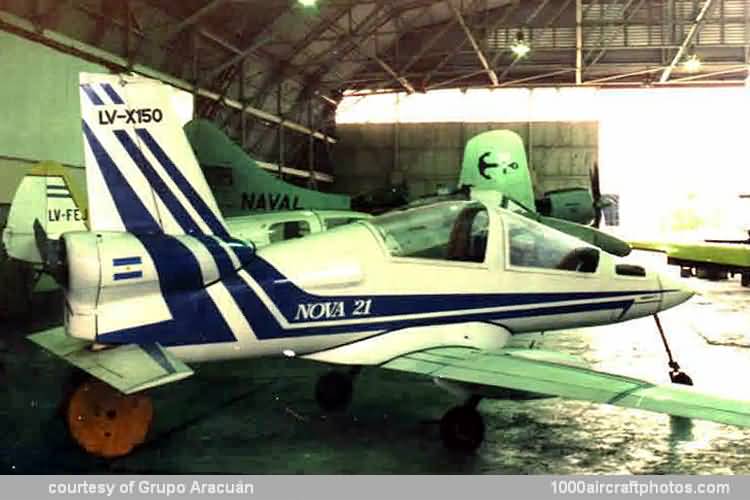Broadening his horizons, in 1987 Zalazar entered the field of heavier powered aircraft design and developed the 'WZ pv Nova', a project that later evolved into the 'Nova 21'. The 'WZ pv Nova' was the design Zalazar presented at the Concurso Internacional de Diseño Aeronáutico (International Competition of Aeronautical Design), organized by CADEA (Confederación Argentina de Entidades Aerodeportivas, Argentinian Aerosports Confederation) in 1987, ending up on a second place.
As the 'WZ pv Nova' design was highly praised by everyone who had the opportunity to know it, Zalazar decided to build a prototype and, after good results, intended to take it into production, and so the company Air Quest International was founded. Unfortunately, the work evolved very slowly, due to inflation disabling all financing. Hence the prototype could only be finished at the end of 1991, and was entered in the Registro Nacional de Aeronaves (National Aircraft Register) as LV-X150, with the new designation 'Nova 21'.
The 'Nova 21' was designed using the very modern CAD (computer aided design) techniques, starting with very exact basic parameters. It was a two-seat low-wing aircraft, totally built of aluminum alloy and according to FAR 23 Standards. It had a retractable tricycle landing gear of which the main principal retracted forwards into gondolas protruding from the leading edges of the wings. The wings were fitted with control surfaces that combined ailerons and flaps. The cabin had tandem seats, each covered by a canopy that hinged to the right. The engine, situated behind the cockpit, was a 90 hp AMW 636 driving a fixed-pitch pusher propeller at the end of the tail.
The prototype, baptized Aguila I (Eagle I), made its first successful flight in Bahia Blanca in January 1992. Unfortunately, the civil aviation crisis made the destiny of 'Nova 21' were similar to every project of that time. The company Air Quest International closed its doors in 1994, keeping the prototype at the Naval Air Base Comandante Espora. Many years later, after the inauguration of the Museo de Aviación Naval (Naval Aviation Museum) at the base, the sole 'Nova 21' was transferred to the museum to increase the patrimony of this institution.
Span: 32 ft 10 in (10.00 m)
Length: 17 ft 7 in (5.20 m)
Height: 8 ft 0.5 in (2.45 m)
Wing area: 80.729 sq.ft (7.50 sq.m)
Max speed: 193 mph (310 kmh)
Cruise speed: 121 mph (195 kmh)
Stall speed (without flaps): 56 mph (90 kmh)
Take off length: 623 ft (190 m)
Climb: 531 ft (162 m)/min
Glide ratio: 1:28
Endurance: 7 hr 30 min
Range: 1,094 mls (1,760 km).
Credentials.
With permission from the author, the story was extracted and translated from the book 'Historia de la Industria Aeronáutica Argentina' (Argentine Aeronautical Industry History), volume 2, by Francisco Halbritter, National Aeronautical Library Editions, History of Aerospace Collection.
Authorizations for photo above: Grupo Aracuán (Aracuan Group). For additionals: 1, 2, 3: Revista Aeroespacio (Aerospace Magazine); 4: Diego Díaz.
